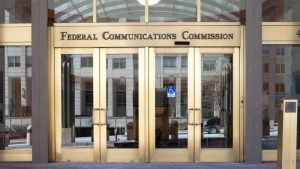Moving beyond basic online learning, Morehouse College is now offering two classes held in virtual reality (VR) for the spring semester.
The state of Wisconsin’s Department of Workforce Development (DWD) is modernizing the IT infrastructure of its unemployment insurance (UI) system in concert with the U.S. Digital Response (USDR) and the General Service Administration’s (GSA) 18F.
The Federal Communications Commission (FCC) unanimously adopted a framework for sharing communications outage information with Federal, state, and Tribal nation agencies.
The Federal Communications Commission’s (FCC) Wireline Competition Bureau (WCB) seeks comment on the Emergency Connectivity Fund for education connections and devices to address the homework gap during the COVID-19 pandemic.
The Department of Energy (DoE) needs to address potential cyber vulnerabilities to the United States electrical grid system in its national cybersecurity strategy, a Government Accountability Office (GAO) report recommends.
To help K-12 teachers navigate teaching during the COVID-19 pandemic, Penn State University (PSU) turned to its Postbaccalaureate Certificate in Teaching and Learning Online in K–12 Settings.
The demand for reliable and affordable broadband service has skyrocketed in the last year as Americans began relying on the internet for telework, distancing learning, and telehealth during the COVID-19 pandemic. However, many Americans – both urban and rural – have lacked either access or sufficient connection strength during the health crisis.
Higher education institutions are increasingly facing more sophisticated cyberattacks targeting – not only targeting their networks and private information, but also ongoing university research.
As the state has shifted to distanced and hybrid learning during the COVID-19 pandemic, the New Jersey Department of Education announced it has closed the K-12 digital divide by using roughly $60 million in Federal funding.
Majority Whip Rep. James Clyburn, D-S.C., and Sen. Amy Klobuchar, D-Minn., introduced a $94 billion Accessible, Affordable Internet for All Act in the House and Senate, respectively. The bill also has the support of Clyburn’s Rural Broadband Task Force, composed of 27 House Democrats.













